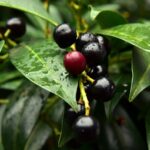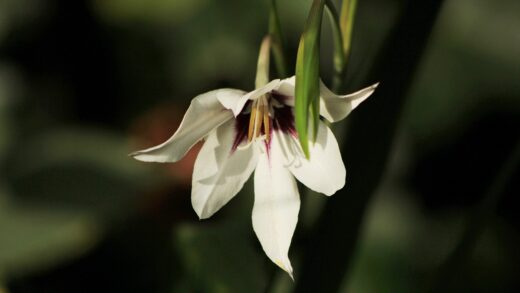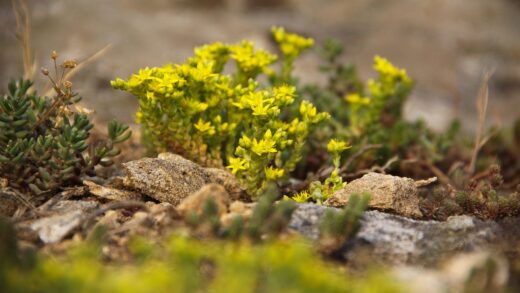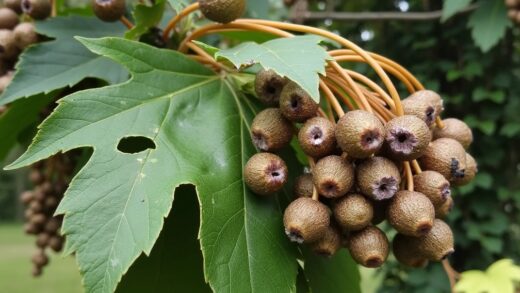Proper care for a lemon tree is a multi-faceted process that ensures not only the survival of the plant but also its ability to thrive and produce high-quality fruit. It begins with understanding that these citrus trees have specific needs regarding their environment, which must be carefully managed. This includes providing the right amount of light, maintaining appropriate temperatures, and ensuring the tree is planted in a suitable medium that promotes healthy root development. Failing to meet these fundamental requirements can lead to a stressed, unproductive tree that is susceptible to a host of problems, from pest infestations to diseases.
The foundation of lemon tree care lies in selecting the correct potting mix and container. Lemon trees require well-draining soil to prevent root rot, a common and often fatal issue. A sandy loam or a specialized citrus potting mix is ideal, as these provide the necessary drainage and aeration for the root system. The container itself should have ample drainage holes and be appropriately sized for the tree, allowing for growth without being so large that the soil remains waterlogged for extended periods. Repotting is typically necessary every few years to replenish nutrients and provide more space for the expanding roots.
Watering practices are another critical component of successful lemon tree cultivation. The goal is to maintain consistent moisture without oversaturating the soil. A reliable method is to water the tree thoroughly when the top few inches of soil feel dry to the touch. The frequency of watering will vary depending on factors such as the season, temperature, humidity, and the size of the pot. It is crucial to reduce watering during the dormant winter months to prevent waterlogged conditions when the tree’s metabolic activity slows down.
Finally, managing the tree’s environment extends to its placement and protection. Lemon trees thrive in locations that receive at least six to eight hours of direct sunlight daily. In regions with harsh winters, they must be brought indoors to a bright, cool location before the first frost. Regular monitoring of the tree allows for early detection of any issues, enabling prompt intervention and ensuring the long-term health and vitality of the plant. A proactive approach to care is always more effective than reacting to problems as they become severe.
Understanding the growth cycle
The annual growth cycle of a lemon tree dictates its care requirements throughout the year. Typically, the cycle begins in spring with a flush of new growth, including leaves, stems, and flower buds. This is a period of high energy expenditure for the tree, necessitating adequate water and nutrients to support this development. Understanding this active phase is key to providing timely fertilization and ensuring the tree has the resources it needs to produce a healthy crop. Pruning is also often performed just before this spring flush to shape the tree and encourage productive growth.
Following the spring bloom, the tree enters the fruit development stage, which occurs throughout the summer months. During this time, the small fruits that have set from the pollinated flowers begin to swell and mature. This period demands consistent moisture and continued nutrient availability, particularly potassium, which is vital for fruit quality. The tree’s energy is directed towards developing the lemons, so it is essential to avoid any significant stress, such as drought or nutrient deficiency, which could cause the tree to drop its fruit prematurely.
As autumn approaches, the growth of the tree begins to slow down, and the lemons continue to ripen. The color of the fruit will gradually change from green to yellow, although ripeness is best determined by size and feel rather than color alone. Watering should be gradually reduced during this time as the days become shorter and cooler. This transition period prepares the tree for the dormancy of winter, and it is important to adjust care practices accordingly to avoid stimulating new, vulnerable growth that could be damaged by cold weather.
Winter is the dormant period for lemon trees, especially those in cooler climates. During this time, the tree’s metabolic processes slow significantly, and it ceases active growth. Care should be minimal, with watering reduced to just enough to prevent the soil from completely drying out. For trees brought indoors, it is crucial to place them in a cool, bright location away from direct heat sources. This period of rest is essential for the tree to conserve energy and prepare for the vigorous growth cycle of the upcoming spring.
Soil and container requirements
Selecting the appropriate soil is a non-negotiable aspect of lemon tree care, as it directly impacts root health and nutrient uptake. Lemon trees demand a substrate with excellent drainage to prevent the roots from becoming waterlogged, which leads to root rot. An ideal mix is slightly acidic, with a pH ranging from 5.5 to 6.5. You can achieve this by using a commercially available citrus potting mix or by creating your own blend using components like peat moss, perlite, and compost. This combination ensures that the soil retains some moisture while allowing excess water to drain away freely.
The choice of container plays an equally important role in maintaining a healthy lemon tree. The material of the pot, whether it be terracotta, plastic, or wood, can influence soil moisture and temperature. Terracotta pots are porous and allow for better air exchange, but they also dry out more quickly. The most critical feature, regardless of material, is the presence of multiple drainage holes at the bottom of the container. These holes are essential for preventing water from accumulating and causing the roots to decay, which is one of the most common reasons for the decline of potted citrus trees.
The size of the container must be carefully considered in relation to the size of the tree. A pot that is too large can hold an excessive amount of soil and moisture, which can lead to the soil staying wet for too long after watering. Conversely, a pot that is too small will restrict root growth and cause the tree to become root-bound, limiting its access to water and nutrients. As a general rule, it is best to choose a container that is only slightly larger than the tree’s current root ball and to repot the tree into a larger size every two to three years as it grows.
Repotting is a necessary maintenance task that should be performed with care. The best time to repot a lemon tree is in the early spring before the new growth flush begins. When moving the tree to a new container, gently loosen the root ball and inspect the roots for any signs of disease or damage, pruning away any that are dead or circling. Placing fresh, nutrient-rich soil in the new pot provides the tree with the resources it needs for the upcoming growing season and encourages the development of a strong, healthy root system.
Light and temperature management
Lemon trees are sun-loving plants that require a significant amount of direct sunlight to thrive and produce fruit. For optimal health, a lemon tree should receive a minimum of six to eight hours of bright, direct sunlight each day. When grown outdoors, a south-facing location is typically ideal as it provides the most consistent and intense light exposure throughout the day. Insufficient light is a common problem, leading to sparse foliage, leggy growth, and a failure to flower or set fruit, so careful placement is paramount for success.
When lemon trees are brought indoors for the winter or grown exclusively as houseplants, providing adequate light becomes more challenging. A south-facing window is the best option, but even this may not provide enough light intensity, especially in regions with short winter days. In such cases, supplementing with a grow light is highly recommended to ensure the tree continues to receive the light energy it needs. Full-spectrum grow lights can mimic natural sunlight and help maintain the tree’s health and prevent leaf drop during the darker months of the year.
Temperature is another critical environmental factor that must be carefully managed. Lemon trees prefer a temperature range that is typical of their native subtropical climates, generally between 18 to 29 degrees Celsius. They are sensitive to sudden temperature fluctuations and should be protected from drafts, whether they are located near an open window or an air conditioning vent. While they can tolerate brief periods of cooler temperatures, they are not frost-hardy and must be protected from freezing conditions, which can cause severe damage or even kill the tree.
Managing the transition between indoor and outdoor environments is crucial to avoid shocking the tree. In the spring, when moving the tree back outside, it should be done gradually over a period of one to two weeks. Start by placing the tree in a shady, protected spot for a few hours each day, and slowly increase its exposure to direct sunlight and outdoor conditions. This process of hardening off allows the tree to acclimate to the changes in light intensity, temperature, and humidity, preventing issues such as sunburned leaves and stress-induced leaf drop.
Nutrient and fertilization needs
Proper nutrition is fundamental to the health and productivity of a lemon tree, as these plants are heavy feeders with specific dietary requirements. A balanced fertilizer formulated specifically for citrus trees is essential for providing the necessary macronutrients: nitrogen, phosphorus, and potassium. Nitrogen is crucial for vigorous leaf and stem growth, phosphorus supports root development and flowering, and potassium is vital for fruit quality and overall plant health. A deficiency in any of these key nutrients can lead to a range of symptoms, including yellowing leaves and poor fruit production.
In addition to the primary macronutrients, lemon trees also require a range of micronutrients for optimal growth. These include iron, manganese, zinc, and magnesium, which play important roles in various physiological processes, such as chlorophyll production and enzyme activation. Many citrus-specific fertilizers will include these micronutrients, but it is wise to check the label to ensure they are present. Deficiencies in these elements often manifest as distinct patterns of leaf discoloration, known as chlorosis, which can help diagnose the specific nutrient that is lacking.
The timing and frequency of fertilization are just as important as the type of fertilizer used. Lemon trees should be fed regularly throughout the active growing season, which typically runs from spring through late summer. Applying fertilizer every four to six weeks during this period will provide a steady supply of nutrients to support new growth, flowering, and fruit development. It is important to cease fertilization in the autumn and winter months, as this can encourage new, tender growth that is susceptible to cold damage and allows the tree to enter its natural dormant period.
When applying fertilizer, it is crucial to follow the manufacturer’s instructions carefully to avoid over-fertilization, which can be more harmful than under-fertilization. Excess fertilizer salts can build up in the soil and burn the tree’s roots, leading to leaf scorch and a general decline in health. Always water the tree thoroughly before and after applying a granular fertilizer to help distribute the nutrients and prevent root burn. For water-soluble fertilizers, ensure they are diluted to the correct strength before application. Regular, appropriate feeding is a cornerstone of proactive lemon tree care.
Common pests and diseases
Even with the best care, lemon trees can sometimes fall prey to common pests and diseases that can impact their health and fruit production. Pests such as aphids, scale insects, spider mites, and mealybugs are frequently encountered, particularly on indoor trees. These sap-sucking insects feed on the plant’s juices, causing leaves to curl, yellow, and drop, and can also produce a sticky substance called honeydew that encourages the growth of sooty mold. Regular inspection of the leaves, especially the undersides, is key to catching these infestations early.
Effective pest management often begins with the least toxic methods. A strong spray of water can dislodge many pests, while insecticidal soap or horticultural oil are effective against soft-bodied insects like aphids and mites. For more persistent infestations, such as scale or mealybugs, wiping them off with a cotton swab dipped in rubbing alcohol can be an effective control measure. Encouraging beneficial insects like ladybugs and lacewings in an outdoor garden can also provide natural pest control, helping to keep populations in check without the need for chemical pesticides.
In terms of diseases, lemon trees are most susceptible to fungal issues, often stemming from poor air circulation and overly wet conditions. Root rot, caused by the Phytophthora fungus, is one of the most serious diseases and is almost always a result of overwatering and poorly draining soil. Other fungal problems include sooty mold, which grows on honeydew, and greasy spot, which causes yellow-brown blisters on the leaves. Prevention is the best strategy, and it involves proper watering, ensuring good air circulation around the plant, and promptly removing any diseased plant material.
When fungal diseases do take hold, treatment often involves the application of a fungicide. Copper-based fungicides can be effective against a range of diseases, but they must be used according to the label directions to be safe and effective. For sooty mold, the underlying pest problem must be addressed first, as the mold itself is harmless to the plant but indicates an insect infestation. A proactive approach that combines good cultural practices with regular monitoring is the most reliable way to keep a lemon tree healthy and free from the stress of pests and diseases.
📷 Pixabay

















